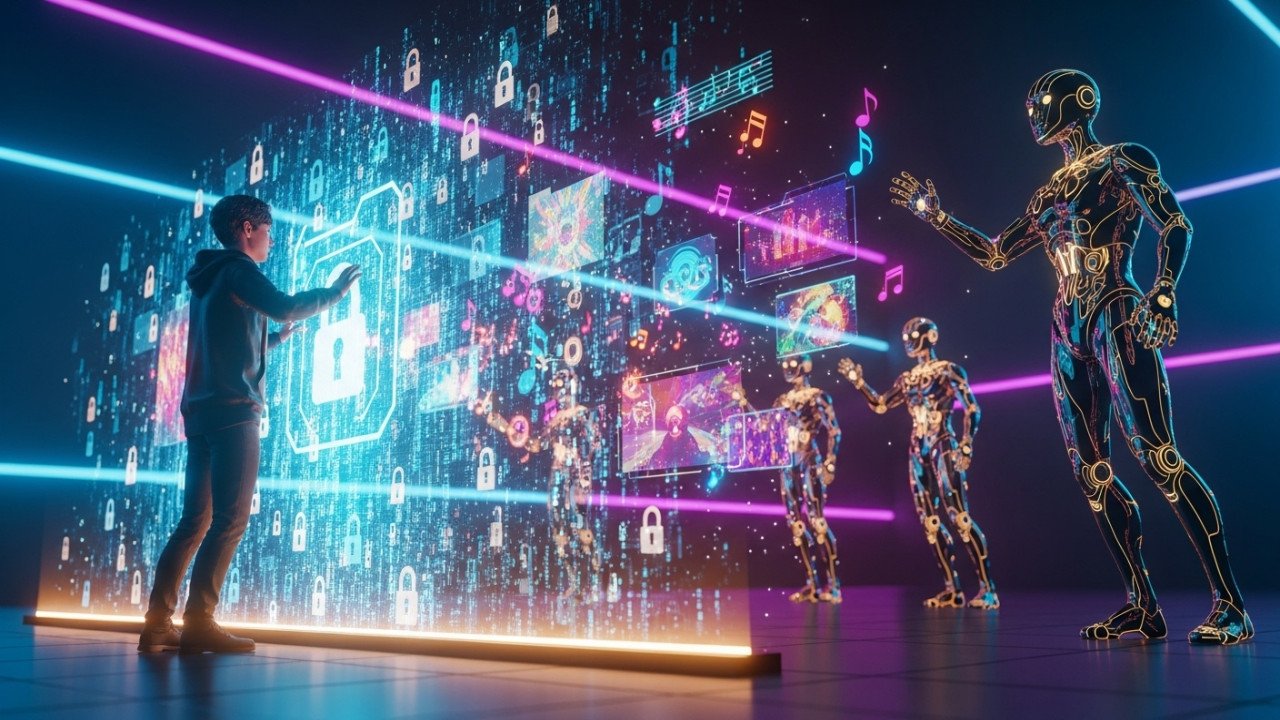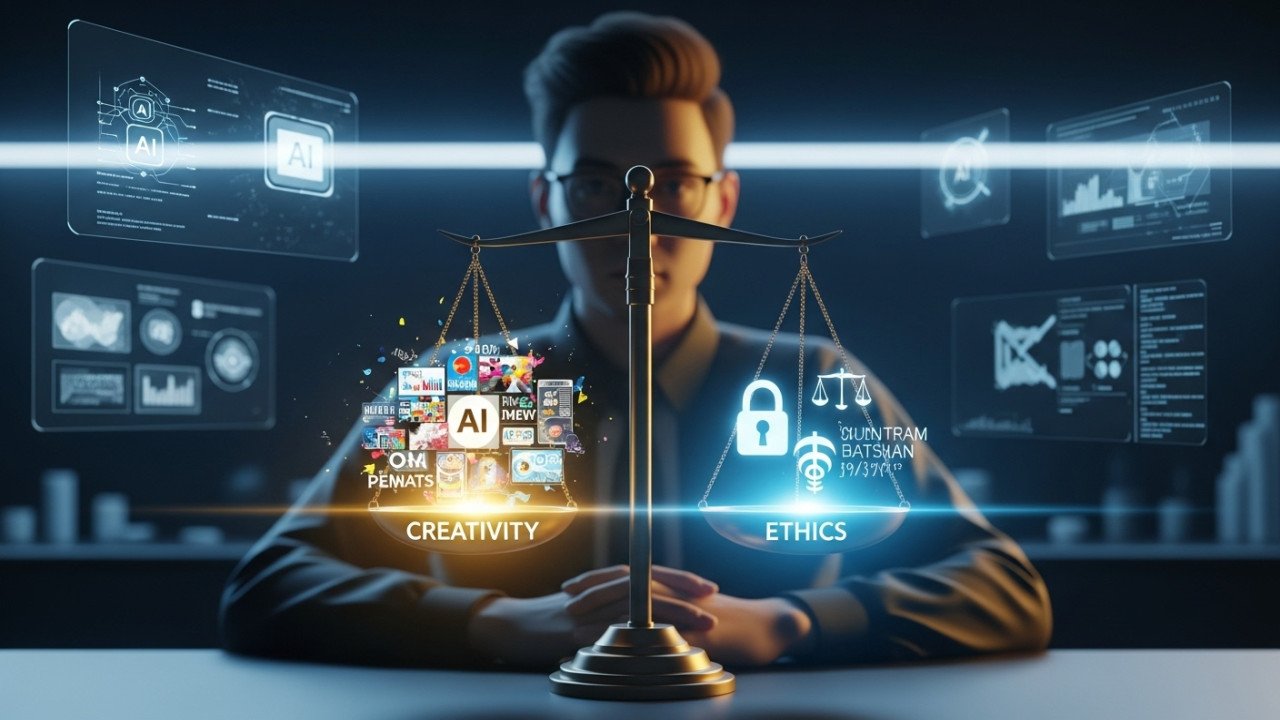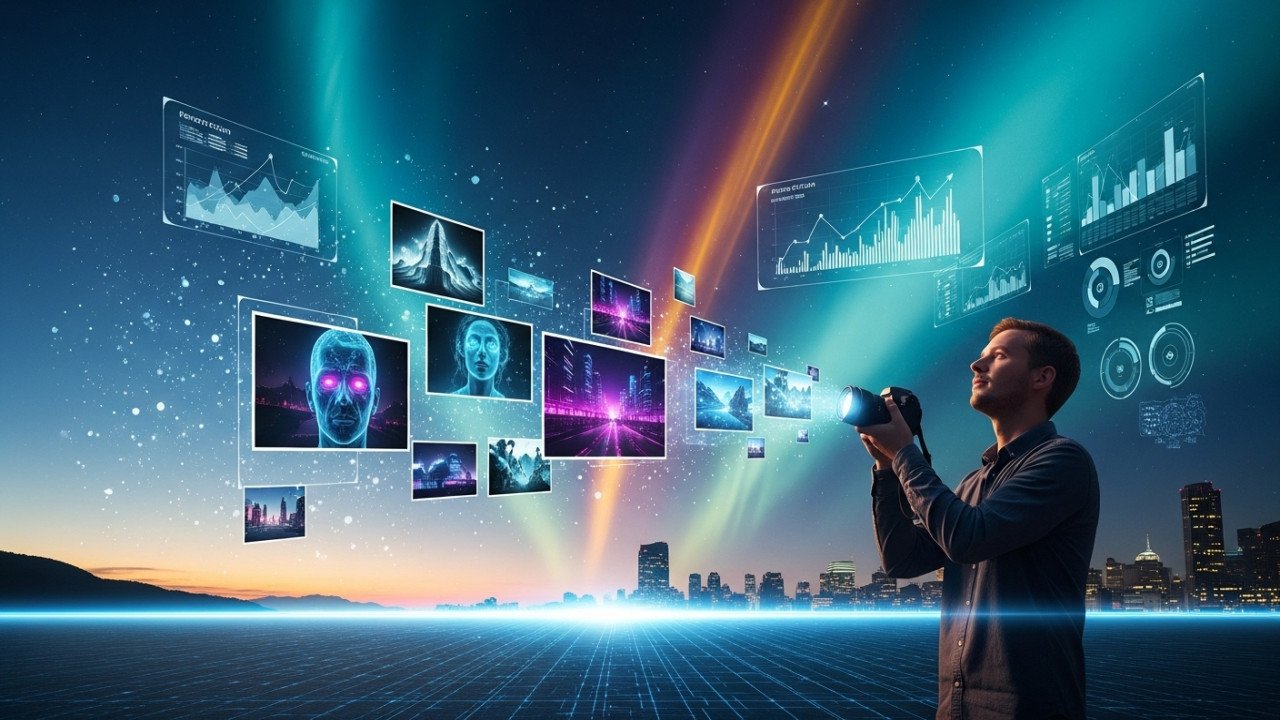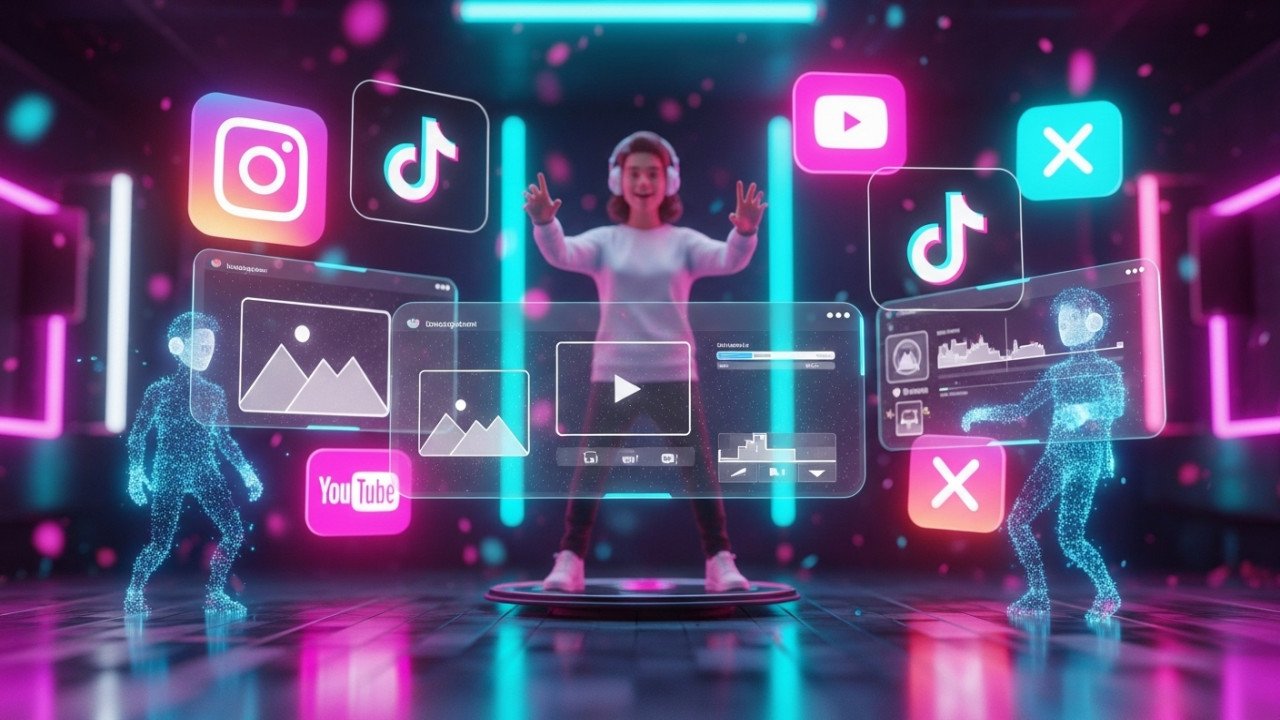Protect Creative Work from AI: Complete Guide 2025
Protecting Your Creative Work in the Age of Artificial Intelligence
The rapid advancement of artificial intelligence has fundamentally altered the creative landscape, presenting both unprecedented opportunities and significant challenges for artists, writers, designers, and content creators worldwide. As AI systems become increasingly sophisticated at generating human-like creative content, protecting original work has become more complex and urgent than ever before.
The democratization of AI tools means that anyone can now generate images, write articles, compose music, or create videos that may closely resemble existing creative works. This technological shift raises critical questions about intellectual property rights, fair use, and the economic sustainability of creative professions in an AI-dominated future.
Understanding how to protect your creative assets while navigating the evolving legal and technological landscape is essential for maintaining control over your intellectual property and ensuring that your creative efforts continue to generate value in an increasingly competitive and automated marketplace.
Understanding the AI Threat to Creative Work
How AI Uses Creative Content
AI systems are trained on massive datasets that often include millions of copyrighted creative works, from images and articles to music and video content, without explicit permission from the original creators or clear compensation mechanisms.
Machine learning algorithms analyze patterns, styles, and techniques from existing creative works to generate new content that may closely mimic original artistic styles or reproduce specific creative elements without attribution.
The training process involves feeding AI systems enormous quantities of creative content scraped from the internet, including social media platforms, portfolio websites, and digital galleries where artists share their work.
Once trained, AI systems can generate content that incorporates learned stylistic elements, potentially creating works that compete directly with original creators while using their creative DNA without permission or compensation.
Economic Impact on Creators
The proliferation of AI-generated content has led to increased competition in creative markets, with clients and consumers sometimes choosing AI alternatives over human-created work due to cost and speed advantages.
Freelance platforms report declining demand for certain types of creative work as businesses discover they can generate adequate content using AI tools at a fraction of traditional commissioning costs.
Stock photography and illustration markets face particular pressure as AI image generators provide unlimited custom content without licensing fees or usage restrictions that typically apply to traditional stock media.
Creative professionals are experiencing pricing pressure and reduced project opportunities as AI capabilities expand into areas previously requiring human expertise and artistic judgment.
Legal and Ethical Complications
The current copyright law was not designed to address AI-generated content or the use of copyrighted material in AI training datasets, creating legal gray areas that complicate protection efforts.
The concept of "fair use" becomes murky when AI systems process thousands or millions of creative works to generate new content that may incorporate elements from multiple sources simultaneously.
Attribution and licensing become nearly impossible to track when AI systems synthesize elements from numerous sources to create new works that may contain undetectable traces of original creative content.
International copyright variations create additional complexity as AI systems and generated content cross jurisdictional boundaries with different legal frameworks and enforcement mechanisms.
Copyright and Intellectual Property Fundamentals
Understanding Your Rights
Copyright protection automatically applies to original creative works upon creation, providing legal ownership and exclusive rights to reproduce, distribute, and create derivative works based on your original content.
Registration with copyright offices strengthens legal protection and enables statutory damages and attorney fees in infringement cases, making enforcement more practical and economically viable.
Moral rights in many jurisdictions protect the integrity of creative works and require proper attribution, providing additional protections beyond basic copyright ownership and economic rights.
Work-for-hire agreements and licensing terms significantly affect your rights and protections, making it essential to understand how different contractual arrangements impact your ability to control usage.
Documenting Creation Process
Maintain detailed records of your creative process, including sketches, drafts, revision histories, and timestamps that can establish originality and creation dates in potential legal disputes.
Version control systems and cloud storage with date stamps provide digital evidence of creation timelines while protecting against claims that your work derived from AI-generated sources.
Photography or video documentation of physical creative processes can provide compelling evidence of human authorship and original creation that distinguishes your work from AI-generated content.
Collaboration records and correspondence about creative projects help establish the human creative process and original thinking behind your work versus algorithmic generation.
International Protection Strategies
File for copyright protection in major markets where your work will be distributed or where infringement is most likely to occur, considering both domestic and international enforcement needs.
Understand the Berne Convention and other international copyright treaties that provide baseline protection across member countries while recognizing limitations in enforcement capabilities.
Consider trademark protection for distinctive creative elements, brand names, or artistic signatures that can provide additional protection layers beyond standard copyright coverage.
Monitor international markets for unauthorized use of your creative work while building relationships with legal counsel familiar with intellectual property enforcement across different jurisdictions.
Digital Watermarking and Attribution
Visible Watermarking Techniques
Implement visible watermarks that identify your work and discourage unauthorized usage while balancing protection needs with aesthetic considerations that maintain professional presentation quality.
Strategic watermark placement makes removal difficult without damaging the overall composition while ensuring that your identification remains visible even if the work is cropped or modified.
Brand-consistent watermarking builds recognition and reinforces your professional identity while creating visual associations between your mark and quality creative work in your field.
Dynamic watermarking techniques adapt to different content types and usage contexts while maintaining protection effectiveness across various distribution channels and platforms.
Invisible Digital Signatures
Embed invisible watermarks and metadata that survive common editing processes while providing forensic evidence of authorship that can be detected using specialized software tools.
Digital fingerprinting technology creates unique identifiers for your creative works that can be tracked across the internet and identified even when works are modified or incorporated into other content.
Blockchain-based attribution systems provide tamper-proof records of creation and ownership while creating decentralized verification systems that don't depend on single platforms or services.
Steganographic techniques hide ownership information within the creative work itself while making unauthorized removal extremely difficult without specialized knowledge and tools.
Metadata and EXIF Protection
Preserve creation metadata, a including camera settings, software used, and creation timestamp, ps that it can provide evidence of human authorship versus AI generation in potential disputes.
Add custom metadata fields that include copyright notices, contact information, and usage restrictions while ensuring this information travels with your work across different platforms and uses.
Understand how different platforms and file formats handle metadata preservation while choosing distribution methods that maintain your attribution and rights information effectively.
Regularly audit your digital files to ensure metadata remains intact while implementing backup systems that preserve this crucial ownership and attribution information long-term.
Platform Policies and Enforcement
Social Media Platform Protections
Understand how major platforms like Instagram, Facebook, Twitter, and TikTok handle copyright claims while learning to use their reporting systems effectively for unauthorized usage.
Content ID systems on platforms like YouTube automatically detect copyrighted material while providing mechanisms for claiming ownership and controlling how your work is used by others.
Platform-specific watermarking and attribution requirements vary significantly, while affecting how you should prepare and upload your creative work for maximum protection.
Community reporting features enable other users to help identify unauthorized usage while building networks of mutual support among creators facing similar protection challenges.
DMCA and Takedown Procedures
Learn how to file effective DMCA takedown notices that result in the quick removal of infringing content while understanding the counter-notification process and potential complications.
Document unauthorized usage thoroughly before filing takedown requests while gathering evidence that supports your ownership claims and demonstrates clear infringement.
Understand the limitations and potential misuse of DMCA systems while balancing aggressive enforcement with fair use considerations and potential false claims risks.
Work with legal counsel experienced in digital copyright enforcement while building systematic approaches to monitoring and addressing unauthorized usage efficiently.
Portfolio and Gallery Protections
Choose portfolio platforms and online galleries that offer robust copyright protection features while understanding how different services handle ownership rights and usage permissions.
Implement access controls and viewing restrictions that limit how your work can be accessed while balancing protection needs with professional visibility and marketing requirements.
Use platforms that provide detailed analytics about who views and interacts with your work while monitoring for suspicious downloading or copying activity patterns.
Consider subscription or password-protected portfolio options for high-value work while maintaining public portfolios with lower-resolution samples that showcase your capabilities.
Legal Strategies and Documentation
Cease and Desist Letters
Draft effective cease communications that clearly establish your rights while demanding specific actions from infringers without making legal threats you cannot support.
Include compelling evidence of ownership and infringement while providing clear deadlines and consequences for non-compliance that encourage voluntary resolution.
Use professional legal letterhead and language while maintaining a firm but reasonable tone that promotes settlement rather than escalating disputes unnecessarily.
Follow up systematically on cease communications while documenting responses and building case files that support potential legal action if necessary.
Legal Insurance and Protection Plans
Consider intellectual property insurance that covers legal costs for enforcing your rights while providing financial protection against expensive litigation processes.
Join professional organizations that provide legal resources and group insurance options while accessing expertise and support networks for creative professionals.
Build relationships with intellectual property attorneys who understand creative industries while establishing fee structures and service agreements before problems arise.
Set aside funds specifically for intellectual property protection and enforcement while treating legal protection as a necessary business expense rather than an optional cost.
Licensing and Contract Protection
Develop comprehensive licensing agreements that clearly define usage rights while protecting your interests and preventing unauthorized usage or redistribution.
Include specific clauses about AI training usage and data mining while addressing emerging technological uses that weren't anticipated in traditional licensing frameworks.
Require attribution and usage reporting in licensing agreements while maintaining oversight of how your work is used by licensed parties across different contexts.
Build relationships with licensing agencies and representatives who can help monitor usage while enforcing compliance with licensing terms and conditions.
Technology-Based Protection Solutions
AI Detection Tools
Use AI detection software that can identify when your creative work has been used in AI training or generated content while monitoring for potential infringement across internet platforms.
Implement reverse image search and content monitoring tools that alert you to unauthorized usage while providing evidence for enforcement actions and rights protection.
Deploy automated monitoring systems that scan for unauthorized usage across multiple platforms while reducing the manual effort required for comprehensive protection surveillance.
Understand the limitations of detection technology while supplementing automated tools with human oversight and expert analysis for complex infringement cases.
Blockchain and NFT Protection
Explore blockchain-based ownership verification systems that create immutable records of creation and ownership while providing decentralized proof of authenticity.
Consider NFT minting for high-value creative works while understanding both the protection benefits and limitations of blockchain-based ownership systems.
Use smart contracts that automatically enforce licensing terms while providing automated royalty collection and usage monitoring for ongoing creative work exploitation.
Understand the environmental and technical implications of blockchain protection while evaluating whether these systems align with your values and business model.
Advanced Encryption Methods
Encrypt sensitive creative work and project files while maintaining secure storage systems that protect against unauthorized access and industrial espionage.
Use secure communication channels for sharing work with clients and collaborators while preventing interception and unauthorized access to proprietary creative content.
Implement version control systems with access logging while monitoring who accesses your creative work and maintaining audit trails for security purposes.
Consider zero-knowledge storage solutions that ensure only you can access your creative work while maintaining protection even if storage providers are compromised.
Building Professional Networks and Support
Creator Community Collaboration
Join professional organizations and creator communities that provide mutual support for intellectual property protection while sharing resources and strategies.
Participate in industry initiatives that address AI-related challenges while contributing to policy development and advocacy efforts that protect creative professionals.
Build relationships with other creators who can help monitor for unauthorized usage while creating networks of mutual support and information sharing.
Collaborate on legal actions and enforcement efforts where appropriate while sharing costs and expertise to make protection more affordable and effective.
Legal and Professional Services
Develop relationships with intellectual property attorneys who specialize in creative industries while ensuring access to expert advice and representation when needed.
Work with business advisors who understand the unique challenges facing creative professionals while developing comprehensive protection strategies.
Consider joining legal service plans or cooperatives that provide affordable access to intellectual property expertise while reducing individual legal costs.
Build relationships with forensic experts and technical specialists who can provide evidence and analysis for complex intellectual property cases.
Industry Advocacy and Policy
Participate in industry advocacy efforts that address AI-related challenges while contributing to policy development that protects creative professionals' interests.
Support legislation and regulation that addresses AI training data usage while requiring consent and compensation for creative work used in AI development.
Engage with platform policy development while advocating for stronger creator protections and more effective enforcement mechanisms.
Collaborate with other creative professionals on industry standards while developing best practices that promote mutual protection and fair competition.
Adapting Business Models for the AI Era
Value-Added Services
Focus on services that AI cannot easily replicate while emphasizing human creativity, strategic thinking, and client relationship management that justify premium pricing.
Develop consultation and creative direction services while positioning yourself as an expert who can guide AI usage rather than competing directly with automated generation.
Offer customization and personalization services while leveraging your understanding of client needs and brand requirements that generic AI tools cannot address.
Build expertise in AI tool integration while helping clients use these technologies effectively rather than being displaced by automated alternatives.
Exclusive and Limited Editions
Create scarcity and exclusivity around your creative work while building collector markets that value original human creation over AI-generated alternatives.
Develop limited edition releases and exclusive collections while building direct relationships with customers who appreciate authentic creative work.
Use physical and digital certificates of authenticity while providing provenance documentation that distinguishes your work from AI-generated content.
Build brand recognition and personal reputation while creating emotional connections with audiences that value human creativity and artistic vision.
Subscription and Membership Models
Develop recurring revenue streams through subscription services while providing ongoing value that builds long-term relationships with clients and customers.
Create exclusive content for members while building communities around your creative work that provide mutual support and advocacy.
Offer behind-the-scenes access and creative process documentation while providing transparency that distinguishes human creation from AI generation.
Build educational components into membership offerings while teaching others about creative processes and building appreciation for human artistic skills.
Future-Proofing Your Creative Career
Skill Development Strategies
Invest in skills that complement rather than compete with AI capabilities while focusing on strategic thinking, client relationships, and creative direction expertise.
Develop expertise in AI tool usage while positioning yourself as someone who can effectively combine human creativity with artificial intelligence capabilities.
Build knowledge in emerging technologies while staying ahead of trends that may affect creative industries and protection strategies.
Focus on uniquely human capabilities while emphasizing emotional intelligence, cultural understanding, and personal perspective that AI cannot replicate.
Technology Integration
Learn to use AI tools effectively while maintaining control over your creative process and ensuring that technology enhances rather than replaces your unique capabilities.
Develop workflows that combine AI efficiency with human oversight while maintaining quality and authenticity that justify professional pricing and client relationships.
Stay informed about emerging AI capabilities while adapting your protection strategies to address new threats and opportunities as they develop.
Build expertise in AI detection and analysis while helping clients and colleagues understand and navigate the evolving technological landscape.
Market Positioning
Establish thought leadership in your creative field while building a reputation and authority that distinguishes you from AI-generated content and amateur creators.
Focus on niche markets and specialized applications while building expertise that creates sustainable competitive advantages over automated alternatives.
Develop strong personal branding while creating recognition and trust that enables premium pricing and client loyalty in competitive markets.
Build direct relationships with customers while reducing dependency on platforms and intermediaries that may not prioritize creator protection and fair compensation.
Measuring Protection Effectiveness
Monitoring and Analytics
Implement comprehensive monitoring systems while tracking unauthorized usage and measuring the effectiveness of your protection strategies over time.
Use analytics tools that provide insights into how your work is being accessed while identifying patterns that may indicate unauthorized usage or distribution.
Monitor market conditions and pricing trends while understanding how AI adoption affects demand and compensation for human creative work in your field.
Track legal and enforcement actions while measuring success rates and cost-effectiveness of different protection strategies and approaches.
ROI of Protection Investments
Calculate the costs and benefits of different protection strategies while ensuring that your investment in intellectual property protection generates positive returns.
Measure the value of preventing unauthorized usage while quantifying the financial impact of effective protection on your creative business sustainability.
Evaluate the effectiveness of different protection tools while optimizing your protection strategy based on results and changing threat landscapes.
Consider the long-term value of building protection expertise while positioning yourself as someone who can help others navigate intellectual property challenges.
Continuous Improvement
Regularly review and update your protection strategies while adapting to new technologies and changing legal frameworks that affect creative work protection.
Learn from protection failures and successes while building expertise that improves your ability to prevent and address unauthorized usage.
Stay informed about industry developments while participating in professional development that enhances your protection capabilities and knowledge.
Build feedback loops with legal counsel and protection service providers while ensuring that your strategies remain current and effective.
Industry-Specific Considerations
Visual Arts and Design
Photography and illustration face particular challenges from AI image generators while requiring specialized protection strategies that address visual content threats.
Graphic design work requires protection against AI tools that can replicate design styles while emphasizing the strategic thinking and brand understanding that justify human expertise.
Fine art and traditional media may have stronger protection against AI replication while building on authenticity and physical presence that digital tools cannot reproduce.
Commercial art applications require comprehensive licensing and usage tracking while ensuring that creative work is properly attributed and compensated across all uses.
Writing and Content Creation
Written content faces challenges from AI writing tools while requiring protection strategies that emphasize original research, unique perspectives, and subject matter expertise.
Journalism and reporting require fact-checking and source verification that AI cannot reliably provide while building on credibility and professional standards.
Creative writing and literature benefit from copyright protection while building on emotional resonance and human experience that AI cannot authentically replicate.
Technical and specialized writing requires domain expertise while providing value through accuracy and insight that generic AI tools cannot consistently deliver.
Music and Audio Production
Music composition and production face emerging AI challenges while requiring protection strategies that address both recorded works and underlying compositions.
Sound design and audio production require technical expertise while emphasizing the creative decision-making that distinguishes professional work from AI generation.
Performance and live music maintain advantages over AI while building on human connection and authentic emotional expression that audiences value.
Music licensing and publishing require comprehensive tracking while ensuring proper attribution and compensation across various usage contexts and platforms.
Conclusion
Protecting creative work in the age of artificial intelligence requires a comprehensive approach that combines legal strategies, technological tools, and business model adaptation to address emerging challenges while preserving creative value.
Success in the AI era depends on understanding both the threats and opportunities while developing protection strategies that enable continued creative work and fair compensation for human creativity.
The key lies in building robust protection systems while focusing on uniquely human creative capabilities that provide sustainable competitive advantages over AI alternatives.
Collaboration among creative professionals, legal experts, and technology developers is essential for developing effective protection strategies while advocating for fair policies and industry standards.
Investment in protection today will determine the long-term sustainability of creative careers while ensuring that human creativity continues to be valued and compensated appropriately.
The future belongs to creators who can effectively protect their work while adapting to technological change and building businesses that thrive alongside rather than in competition with AI systems.
Proactive protection and strategic adaptation will enable creative professionals to maintain control over their intellectual property while building sustainable careers in an AI-enhanced world.











Comments (0)
No comments found